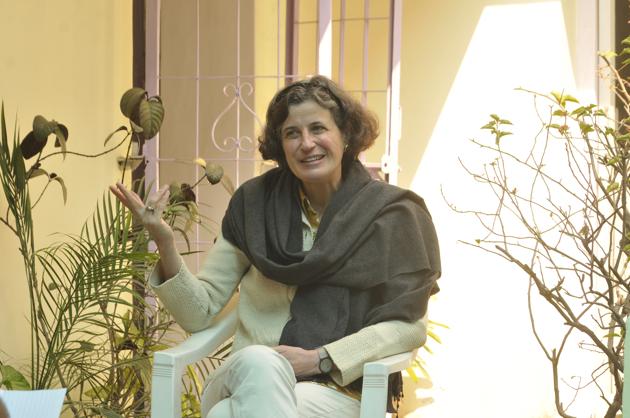Avadh culture existed much before Mughal times, says UK univ prof
Francesca Orsini, professor of Hindi and South Asian literature at SOAS University of London, is a literary historian working primarily with Hindi and Urdu material. Known as the School of Oriental and African Studies, SOAS is a leading public research university for the study of Africa, Asia and the Middle East (West Asia). In an interview, Orsini spoke about the multilingual literature of Avadh.

What brings you to the east?
I have been interested in how to do literary history in a multilingual society, especially the literary history written in Hindu, Urdu or Persian. It is interesting to see and understand how does a Persian writer rewrite ‘Mrigavati’? ((Composed in Avadhi by Qutban, a Sufi poet of the medieval era, Mrigavati tells of the princess Mrigavati of Kanchanpur and the prince of Chandragiri, son of Ganapati Devi. The prince wins her after overcoming many difficulties).
If you copy the same text in different speech, what does it mean? All this make us understand as to how does literature live in a multilingual society. For this, I chose the east, particularly this region.
Why Avadh?
Avadh allows us to think about the culture away from the Mughal court. There are two things. One is how was the culture in the Mughal period, which is also the Bhakti period. How it was there in the towns or villages. Second, of course, the Avadh culture was here much before as the first written Hindi text we get is Daud’s ‘Chandayan’ of 1379. That’s even before the Mughal times.
Has multilingualism overshadowed Brajbhasha, especially post 14th century?
The emergence of nawabi Faizabad and Lucknow prompted a move among the Persian-educated towards Urdu and away from the cultivation of Brajbhasha courtly poetry. Brajbhasha did not disappear completely from the urban culture of nawabi Lucknow, but became the language of music and songs. Actually, the old taste doesn’t completely die. Somehow, it exists side by side.
What is the significance of places when we talk about multilingualism of literature?
It’s very important to bridge the gap between the texts and the places in poetry or literature. I went to Kada (near Allahabad, which is now known as Prayagraj)—the place of Maluk Das (a poet-saint of the medieval history). His place is surrounded by a Dargah and other Sufi places. Without visiting the place; one can’t understand why Maluk Das mentioned Khadak Shah. I have been visiting ‘kasbas’ of saint poets. I visited Mir Abdul Wahid Bilgrami’s place Bilgram, Maluk Das’s Kada, Paltu Das’s kasba in Ayodhya. After visiting their places, you get an actual idea of their writing. North Indian Sufis wrote in Persian because everyone understood Persian and Muslims like Jayasi wrote in Avadhi because of place they belonged to.
How do you see Avadh in world literature?
Avadh is an example of a multilingual and non-systematic literary history that provides an alternative to monolingual and competitive literary histories of Hindi, Urdu, and Persian in north India.





